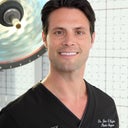Surgeons write they don't put packing into noses after rhinoplasty surgery. Does it mean they put NOTHING AT ALL or they put some kind of internal splint more confortable than packing ? Thanks.
Answers (11)
From board-certified doctors and trusted medical professionals
Dr. Nick Slenkovich, MD

Dr. Nick Slenkovich, MD
Board Certified Plastic Surgeon
Answer
Dr. John Layke, DO, FACS

Dr. John Layke, DO, FACS
Board Certified Plastic Surgeon
Answer
Dr. Jerold Olson, MD

Dr. Jerold Olson, MD
Board Certified Facial Plastic Surgeon
Answer
Dr. Afshin Parhiscar, MD

Dr. Afshin Parhiscar, MD
Board Certified Plastic Surgeon
Answer
Dr. Sheila S. Nazarian, MD

Dr. Sheila S. Nazarian, MD
Board Certified Plastic Surgeon
Answer
Dr. Brian J. Reagan, MD
Dr. Brian J. Reagan, MD
Board Certified Plastic Surgeon
Answer
Dr. Curtis Perry, MD
Dr. Curtis Perry, MD
Board Certified Facial Plastic Surgeon
Answer
Dr. Stephen Weber MD, FACS
Dr. Stephen Weber MD, FACS
Board Certified Facial Plastic Surgeon
Answer
Dr. William Marshall Guy, MD
Dr. William Marshall Guy, MD
Board Certified Facial Plastic Surgeon
Answer
Dr. Frederic H. Corbin, MD (license restricted)
Dr. Frederic H. Corbin, MD (license restricted)
Board Certified Plastic Surgeon
Answer
More Rhinoplasty Questions
See all Rhinoplasty Q&AWE SEND PRETTY
EMAILS
What’s trending? Who’s turning heads? Which TikTok myths need busting? We’ve got you. No fluff, no gatekeeping—just real talk. Get our free, unfiltered newsletter.